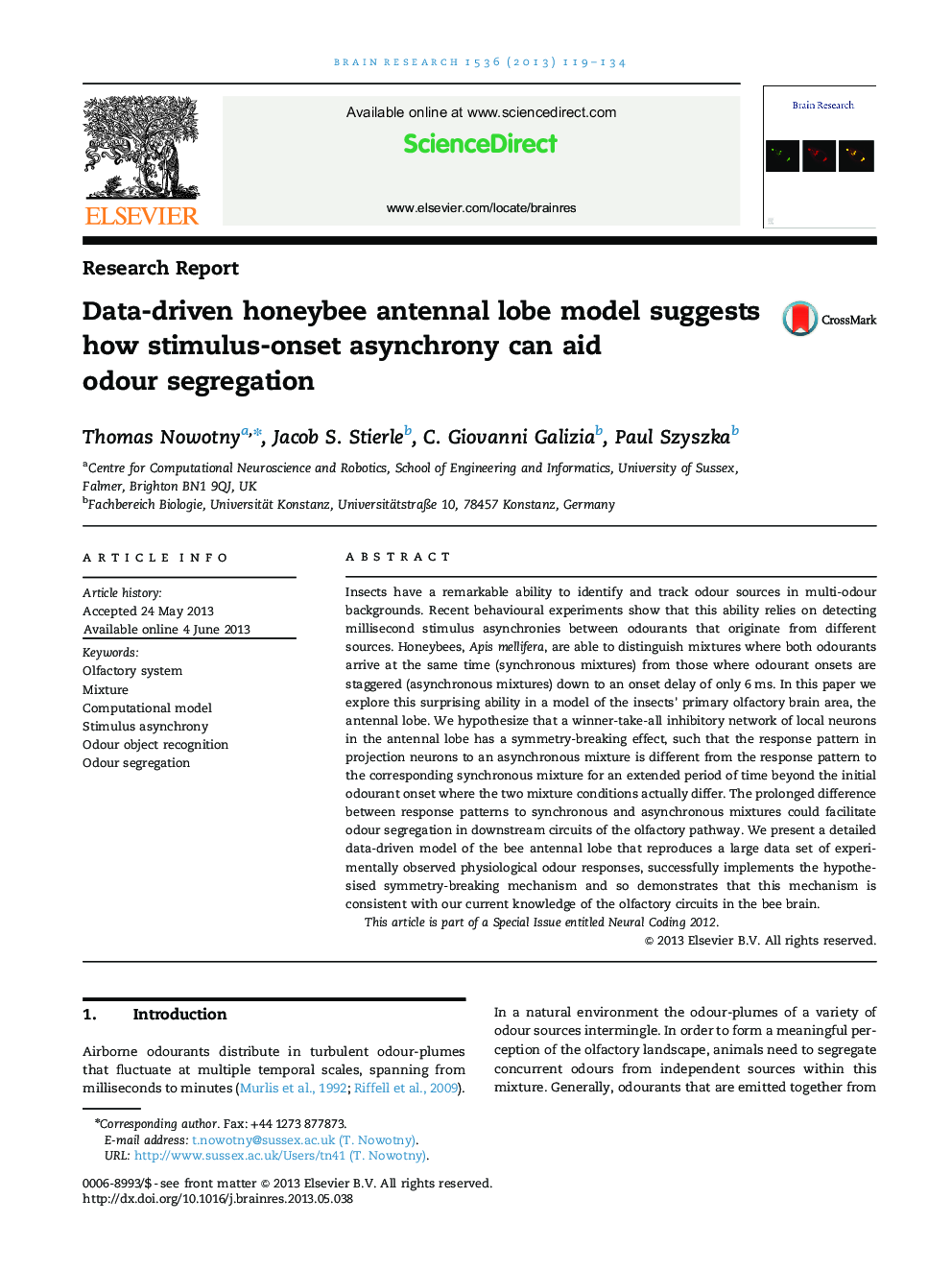| کد مقاله | کد نشریه | سال انتشار | مقاله انگلیسی | نسخه تمام متن |
|---|---|---|---|---|
| 6263664 | 1613903 | 2013 | 16 صفحه PDF | دانلود رایگان |
Insects have a remarkable ability to identify and track odour sources in multi-odour backgrounds. Recent behavioural experiments show that this ability relies on detecting millisecond stimulus asynchronies between odourants that originate from different sources. Honeybees, Apis mellifera, are able to distinguish mixtures where both odourants arrive at the same time (synchronous mixtures) from those where odourant onsets are staggered (asynchronous mixtures) down to an onset delay of only 6 ms. In this paper we explore this surprising ability in a model of the insects' primary olfactory brain area, the antennal lobe. We hypothesize that a winner-take-all inhibitory network of local neurons in the antennal lobe has a symmetry-breaking effect, such that the response pattern in projection neurons to an asynchronous mixture is different from the response pattern to the corresponding synchronous mixture for an extended period of time beyond the initial odourant onset where the two mixture conditions actually differ. The prolonged difference between response patterns to synchronous and asynchronous mixtures could facilitate odour segregation in downstream circuits of the olfactory pathway. We present a detailed data-driven model of the bee antennal lobe that reproduces a large data set of experimentally observed physiological odour responses, successfully implements the hypothesised symmetry-breaking mechanism and so demonstrates that this mechanism is consistent with our current knowledge of the olfactory circuits in the bee brain.This article is part of a Special Issue entitled Neural Coding 2012.
Journal: Brain Research - Volume 1536, 6 November 2013, Pages 119-134
